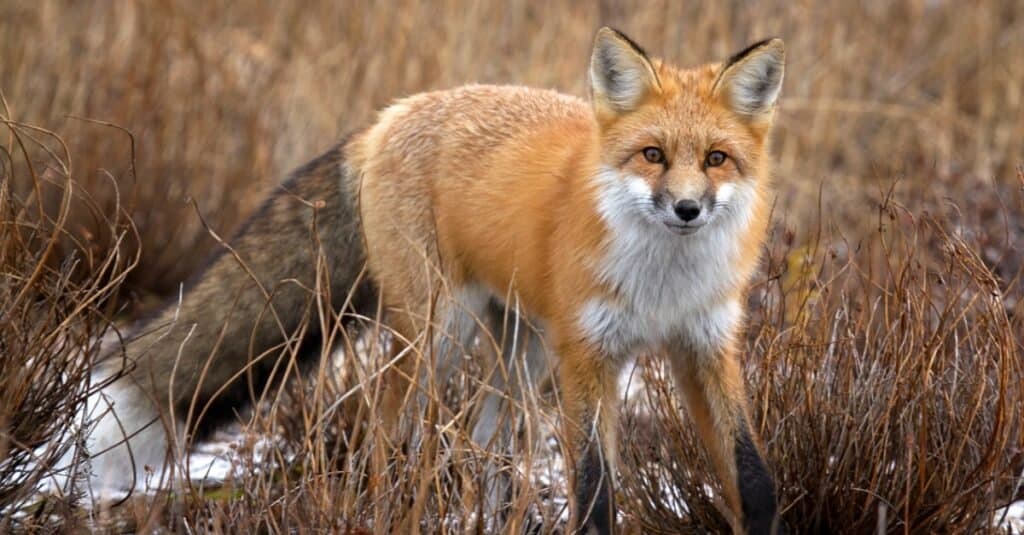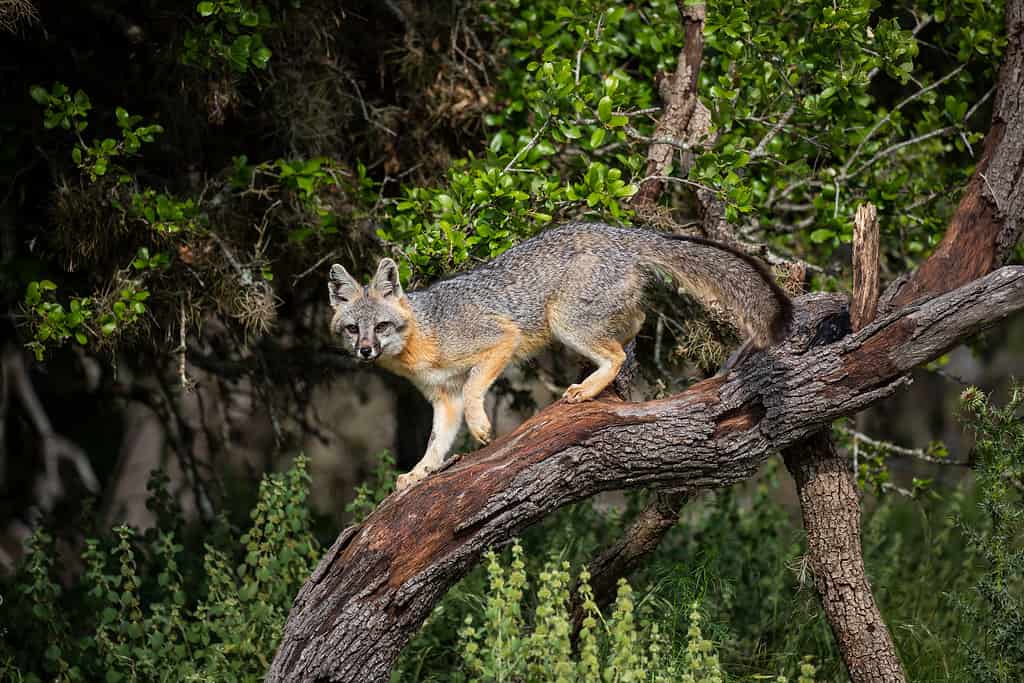Curious about the types of foxes that live in the fields and woodlands of Tennessee? Across the flat lands of western Tennessee to the rolling hills and mountainous regions of middle and eastern Tennessee, two species of fox roam. In this guide, we’ll take an in-depth look at these two types of foxes, where they live, what they eat, and how to distinguish them.
Read on to learn more!
Foxes in Tennessee: Gray and Red Foxes
Foxes belong to the Canidae family along with other canids such as domestic and wild dogs, jackals, coyotes, and wolves. North America is home to four native species of foxes- the red, gray, artic, and kit. Tennessee is home to two of these species- the red and the gray foxes.
Foxes in Tennessee: the Red Fox (Vulpes vulpes)
The red fox (Vulpes vulpes) enjoys the widest geographical range of any fox and any member of the expansive Carnivora order. This species is distributed across the entirety of the northern hemisphere.
In Tennessee, the red fox is also widespread across the state, inhabiting rural and suburban areas. You can find this adaptable animal living in open fields, meadows, woodland edges, and even cultivated parks.
Identifying Features and Size
You can identify the red fox by its reddish coat, black coloration on its legs, ears, and ends of the tail fur, elongated muzzle with white along the cheeks and chest, and white-tipped, bushy tail. Adult red foxes can weigh 6-15 pounds and measure about 36-46 inches from the tip of the nose to the tip of the tail.

The red fox features a reddish coat, black markings, pointy ears, and a bushy, insulating tail.
©iStock.com/Lynn_Bystrom
Diet
These non-specialist, omnivorous canids can eat a variety of plants and animals. The diet of red foxes includes berries, nuts, rodents, rabbits, birds, insects, reptiles, amphibians, and fish. In the warm months, you may notice that plants, berries, and nuts make up a larger portion of their diet. While in the late fall and winter, they shift to primarily hunting.
Life Span
While they can live up to about 15 years, the average lifespan for wild red foxes is only about 3-6 years due mainly to predation, increased competition from habitat destruction, and hunting/trapping by people.
Behavior, Adaptations, and Breeding Season
Red foxes tend to live solitary lives and typically hunt alone. While they can be active at any time of day, they prefer to hunt at dawn and dusk. Red foxes do not hibernate, so you might see them in Tennessee at any time of the year.
However, during the winter, these animals are less active to conserve energy. With their thick double coats and bushy tails that they use like a blanket, red foxes can stay warm in burrows during the coldest part of the year.

The thick, double coat and large bushy tail of the red fox protect it from the cold during the winter months.
©iStock.com/William Chua
Foxes in Tennessee: the Gray Fox (Urocyon cinereoargenteus)
The gray fox (Urocyon cinereoargenteus) is distributed throughout the United States excluding the northwest portion, parts of South America, Central America, Mexico, and southern Canada.
Like the red fox, the gray fox is widespread across the state of Tennessee. It prefers more forested and shrubby habitats rather than open meadows and woodland edges.
Identifying Features and Size
In comparison to the red fox, the gray fox is far less bushy and less dog-like in appearance. It features a rough gray and tan-colored coat with white markings on the cheeks, neck, chest, and legs. They have large eyes, and erect ears that are softly rounded at the tips in comparison to the red fox’s distinctly pointy-tipped ears.
The gray fox is the smaller of the two species found throughout Tennessee. An adult typically measures 30-44 inches from the nose to the tail. They can weigh 6-13 pounds at maturity with males usually slightly larger than females. While gray foxes measure and weigh in only marginally smaller than the red fox, they tend to appear notably diminutive in size due to the large, bushy coat of the red fox.

The gray fox features a primarily gray and tan coat. Its large eyes aid in nocturnal hunting.
©Sean R. Stubben/Shutterstock.com
Diet
An opportunistic omnivore, the gray fox enjoys a wide-ranging diet. Their primary foods, depending on the season and habitat, include rodents, rabbits, birds, native and agricultural berries, nuts, and insects. In suburban forested areas, gray foxes will readily scavenge dog or cat food and anything else they can find left outside homes or in trash cans.
Lifespan
Similarly to red foxes, the gray fox can live in captivity for up to about 15 years, but in the wild, they seldom survive past 6 years old. They face the same pressures as the red fox which brings down their wild life expectancy.
Behaviors and Adaptations
The gray fox is a solitary species excluding the period when both parents raise their young. Individuals will maintain and energetically defend small territories of up to a couple of square miles. The gray fox is not as active during the day as the red fox. Instead, it prefers nocturnal and crepuscular activity.
An interesting adaptation of gray foxes is their ability to climb trees. Their rotating wrists and cat-like semi-retractable claws allow them to climb into trees for protection and forage. They are one of two species in the canid family that have this ability, sharing this trait with the raccoon dog of East Asia.

The gray fox is one of two species in the canid family capable of climbing trees.
©Danita Delimont/Shutterstock.com
The photo featured at the top of this post is © Daniel Rodriguez Garriga/Shutterstock.com
Thank you for reading! Have some feedback for us? Contact the AZ Animals editorial team.







